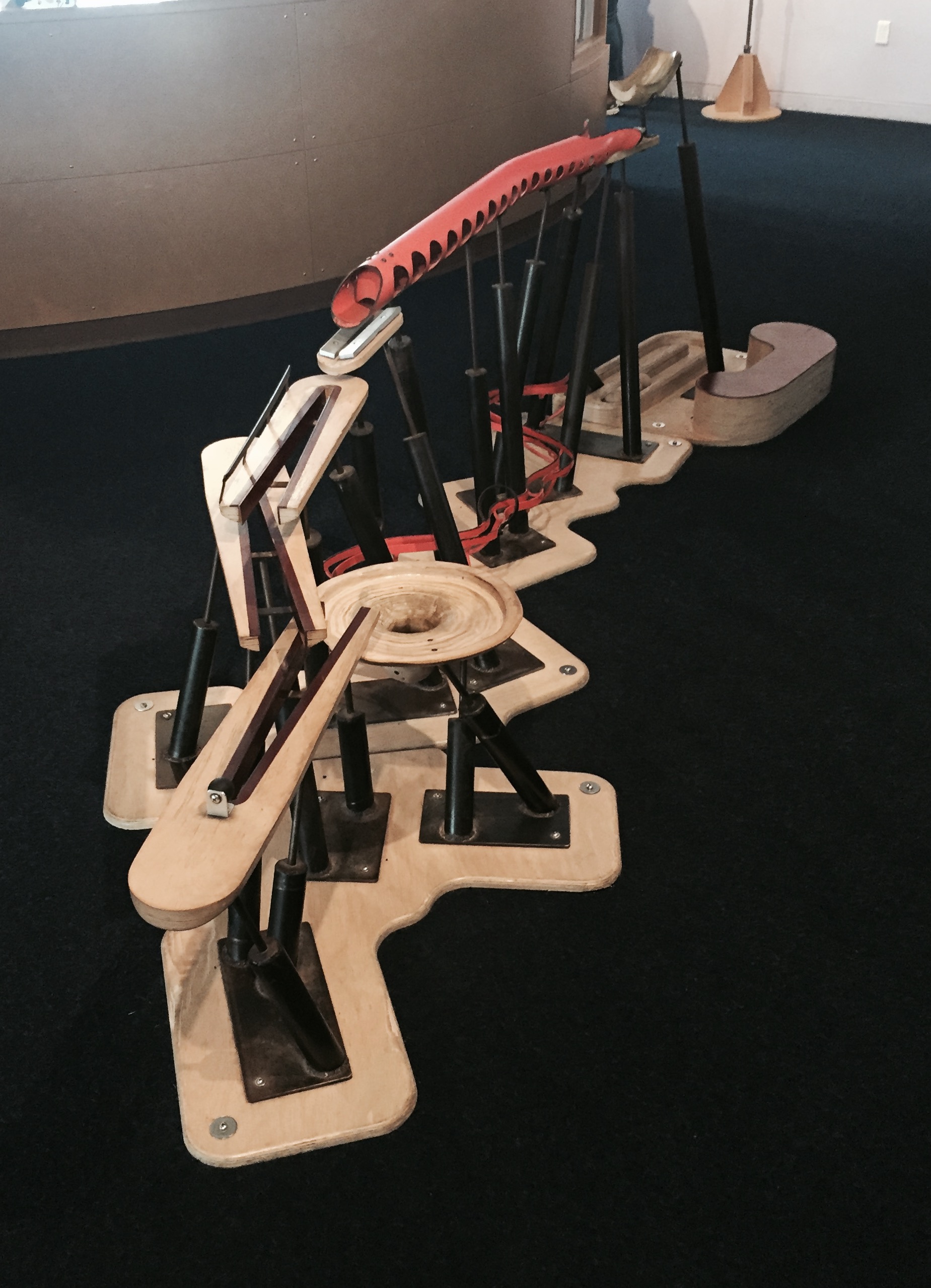
At the Children’s Museum I chose to focus on the sculptural ball maze in the nursery area on the second floor. The track was fairly centralized in the space because of the size of it, causing kids to gravitate towards it. There was no facilitator present but I felt the installation was largely focused on autonomy for the children. Overall, they seemed to understand the sequence of the piece; you place a ball onto the track of metal pipes and rails at the highest point and watch it move along until it returns to the starting point. Some of the younger children needed a little bit of guidance at the start but they grasped the concept very quickly. The age of those engaging varied from approximately 3-7 years old and at any moment in time of observing there were a maximum of 4 children and 3-5 parents interacting with the exhibit.
The younger children tended to place a ball onto the track and run to the other end to see the balls turn the corner and then would run back to the start. This was mainly because the midpoint of the track was at a height they could easily see, despite the ball being visible the whole time with perforations in the pipe and an exposed track in parts. They were also more inclined to try and place as many of them onto the track at once as they could. The older kids would usually stand at the starting point, place a ball onto the track, and watch the entire sequence from the same position. This allowed them to the full chain of events caused by their actions.
The parents tended to stand off to the side and watch their children engage. They would offer small comments like “follow your ball” and “don’t touch it” but mostly allowed the children to figure everything out on their own. The average time spent at the exhibit was about 5-7 minutes and some parents had to pry their kids away from it.
Even for such a predictable outcome there was still some uncertainty with the installation. Sometimes the balls would fall off the track at the turning points and roll across the room which the kids would sprint after. Some children would remove balls from the track before they reached the ending point. I think these small attributes intrigued the kids the most. The least interesting part for kids was the final return of the ball to the starting point. They did not pay too much attention to the fact they didn’t have to retrieve the ball after releasing it. Since the track was metal and the balls were wooden there was also a slight auditory aspect to the piece in addition the obvious visual sequence.
Overall I found the installation one of the most engaging at the exhibit because of its simplicity, scale, and the physical sequence resulting from engagement.
Leave a Reply
You must be logged in to post a comment.